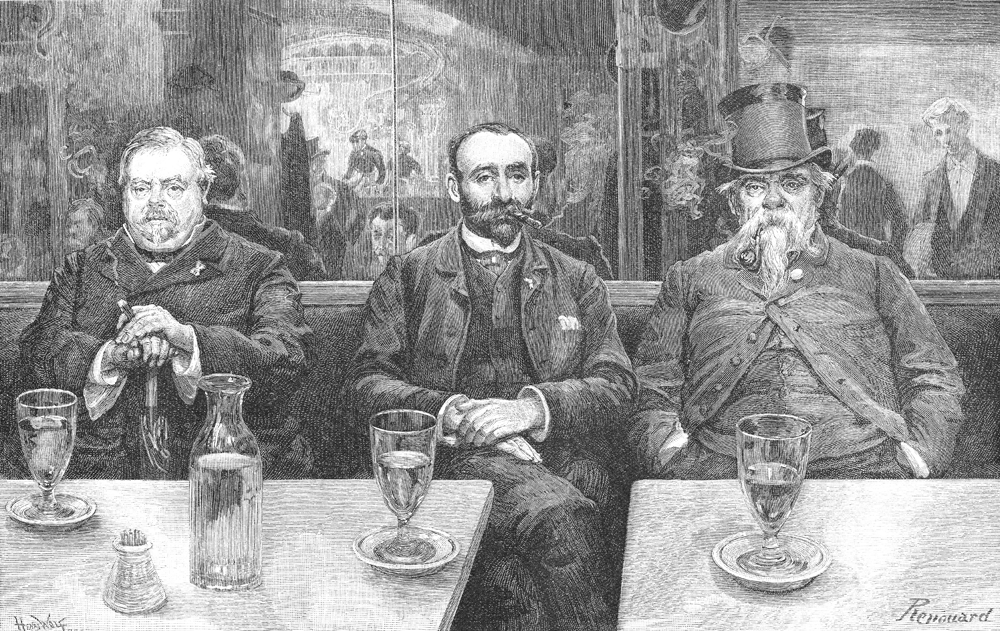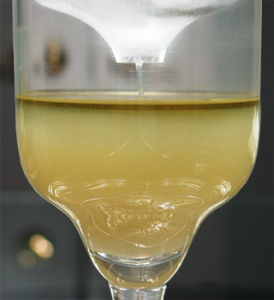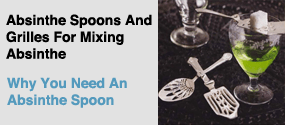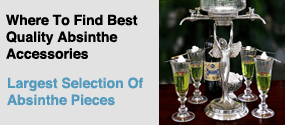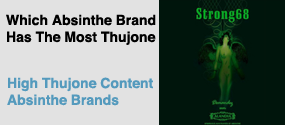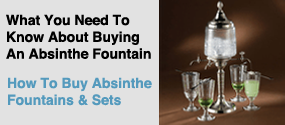ABSINTHE REVIEW CRITERIA
| Use this guide to better understand the absinthe review process. This is common criteria used by absinthe enthusiasts to evaluate Absinthe. Absinthe-Review does consider this criteria but does not judge an absinthe better or worse if it rates low in one or more specific categories. It should be noted that learning How To Drink Absinthe properly is the most important factor if you want to mix a perfect drink. Color Louche Aroma Flavor Finish |
Glossary Of Absinthe Terms
Absinth: Central European spelling of absinthe. Commonly used to describe a Czech Absinthe.
Absinthism: A fictitious syndrome created by the anti-absinthe movement to demonize absinthe in the 19th century. Alcoholism associated with absinthe.
Absintheur: Absinthe enthusiast. Collector of absinthe or absinthe accessories.
Alembic/Alambic: French for distillation apparatus or still.
Artemisia Absinthium: See Wormwood.
Bain-Marie: A type of distillation apparatus using the “double boiler” method to heat the still.
Belle Époque: An era of artistic and cultural refinement in a society, especially in France at the beginning of the 20th century.
Blanche: French for “white”. Describes clear, uncolored absinthe. See also Absinthe La Bleue.
Clandestine: Absinthes made by amateur distillers where distillation is prohibited.
Color: See review criteria at top of page.
Absinthe Cuillere: French for Absinthe Spoon.
Feuille Morte: French for “Dead or Fallen Leaf”. Refers to the brownish color a verte absinthe turns as it ages.
La Bleue: Describes clandestine Swiss blanche absinthes. French for “the blue”. Refers to bluish tint after the addition of water.
La Fée Verte: French for “Green Fairy”
L’Heure Verte: French for “The Green Hour”
Petite Wormwood: AKA Artemisia pontica, Roman Wormwood. Also See Wormwood.
Sans Sucre: French for “Without Sugar”
Suisse Absinthe: French for “Swiss.” Also a style of absinthe produced using superior distillation processes.
Thujone: Active component Artemesia absinthium (wormwood).
Verre: French for “drinking glass”.
Verte: French for “green”. Describes green absinthe.
Wormwood: Broad range of plants belonging to the genus Artemisia. Only one Artemisia absinthium is an ingredient in authentic absinthe. Note: Artemisia pontica (AKA roman wormwood or petite wormwood) is used in the coloration of some absinthe.
